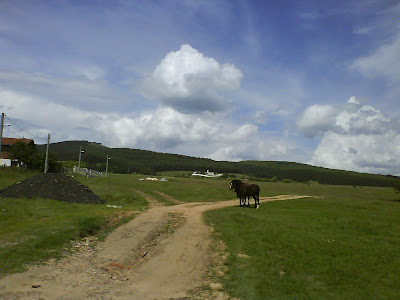Dance Festival at Dobroslavci

Yesterday, while Ellis was hiking in the Rila mountains, I joined a new friend for an outing with the Sofia HASH House Harriers . This is a group that meets twice a month for a bit of hiking, a bit of drinking, some food and a good time. Most of the members are ex-pats living in Bulgaria. The destination for this week’s get-together was a bit of a stray from their usual outing, but was well worth the trip (unfortunately, I only have a few photos taken with my phone, as Ellis had the camera…). We started out visiting a Monastery at Balsa, a short distance north of Sofia. We drove through a small village, and then parked in the fields at the edge of the village, and hiked up to the monastery. The walk took about ½ hour, but most of it was very much uphill (and I told Ellis that I didn’t want to come with him, since it was too much hiking!). The monastery itself is not lived in, and there’s a small chapel with very pretty paintings inside. After we returned to our cars, we drove a couple







